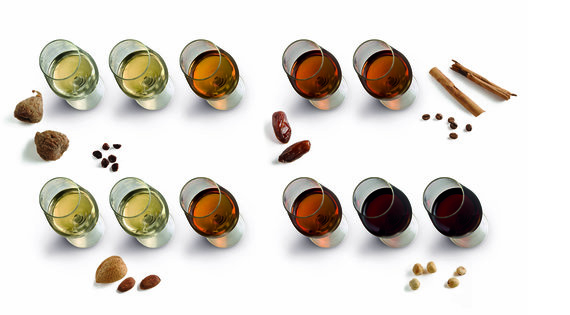________________________________
SHERRY IS IN A CYCLE of change – while the volume figures don’t make for great reading and the slight growth in value is positive but not enough to hang a Tío Pepe hat on, new consumers are coming into the category without their parents’ preconceptions.
The ‘sherry is for grannies’ association is being challenged by two factors. The first is nature – not to be macabre, but the golden oldies who grew up with the drink aren’t going to last forever and the next generation is the one that turned away from it. The second is that millennials are discovering sherry for the first time in an entirely new way –heroed in cocktails and paired with a plethora of cuisines.
González Byass international sales director Nicolas Bertino picks up the point: “We have seen a marked change in attitudes towards sherry from people under 40 who are coming to it without any of the traditional baggage. Admittedly this is from a small base, but it is one which has gained momentum in markets around the world.”
Bertino credits the arrival of sherry bars in London towards the end of the last decade for the renewed interest in the category. He adds: “There was the US boom in sherry as an essential ingredient for wine-based cocktails in top bars in New York and now we can see the trend spreading to Germany and mainland Europe where interest is beginning to revive. There is a definite shift towards the lighter fino style which can be enjoyed as white wines.”
In terms of food, an appetite for Spanish cuisine and the rise in tapas as a sociable and economic way of dining has done sherry no harm whatsoever. “The boom in Spanish cuisine has certainly helped to market sherry to gastronomes worldwide,” Bertino says.
“Sherry is a perfect wine to match with food throughout a meal, from the lighter fino styles at the beginning to rich, dry olorosos which pair well with game and meat, to PX at the finish.”
Sherry’s food-pairing versatility extends beyond Spanish cuisine, Grupo Estevez international division deputy managing director, Ignacio López de Carrizosa, says.
“What is most important is the fact that we are avoiding the typical clichés of pairing sherries with the traditional Spanish cuisine and we have adopted international cuisine to match with our different sherry styles.”
He adds: “Asian, Nikkei (Japanese/Peruvian fusion), seafood, etc, have proved to match beautifully with sherry. The trendy umami flavours are demanding sherry to pair with foods where other wines cannot make it.”
De Carrizosa insists this can only be achieved by a versatile spectrum of different styles offered by this wine – ranging from the ultra-dry and saline manzanilla to the deliciously rich Pedro Ximenez.
CONSUMPTION CHANGE
Changes in consumption and consumer base are undeniably reasons to rejoice, but ultimately sherry is a business and the books need to be balanced. In 2015, total sherry volumes declined by 2% and grew 3% in value, according to official figures from the all-seeing, all-knowing governing body, the Consejo Regulador.




